Ditapis dengan
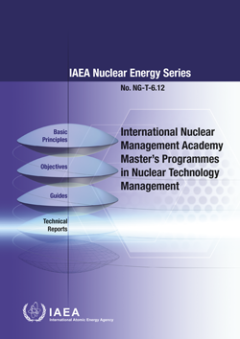
International Nuclear Management Academy Master’s Programmes in Nuclear Tec…
The IAEA facilitated International Nuclear Management Academy (INMA) supports universities to establish and deliver master’s degree programmes focusing on technology management for the nuclear sector including nuclear power programmes, nuclear applications and radiological technologies. The current publication provides guidance for these master’s programmes that have a specialized focus on …
- Edisi
- -
- ISBN/ISSN
- 978-92-0-107217-7
- Deskripsi Fisik
- 107 Hal
- Judul Seri
- -
- No. Panggil
- -
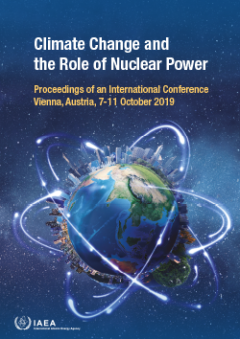
Climate Change and the Role of Nuclear Power - Proceedings of an Internationa…
To address the challenges posed by climate change, and to achieve the goals established in the 2015 Paris Agreement, nuclear power has been identified to have great potential to contribute to the 1.5°C climate change mitigation target. This topical conference on climate change and the role of nuclear power, the first of its kind, served as a unique forum for exchanging science-based informatio…
- Edisi
- -
- ISBN/ISSN
- 978-92-0-120120-1
- Deskripsi Fisik
- 218 Hal
- Judul Seri
- -
- No. Panggil
- -

Design of the Reactor Containment Systems in Nuclear Power Plants, A Safety G…
Safety requirements for the design of containment systems are presented in a generic form. The various functions of confinement, isolation, energy management, radionuclide management and combustible gas control as well as the structural and leak integrity are covered. Annexes provide examples for the most common design solutions and other aspects.
- Edisi
- -
- ISBN/ISSN
- 9201237855
- Deskripsi Fisik
- 68 p. : Illus. ; 24 cm
- Judul Seri
- Safety Series No. 50–SG–D12
- No. Panggil
- 621.48 IAE d

Ultimate Heat Sink and Directly Associated Heat Transport Systems for Nuclear…
This book consist : Introduction; Design principles; Postulated initiating events; and Design features. (Jml)
- Edisi
- -
- ISBN/ISSN
- 920123581X
- Deskripsi Fisik
- 62 p. : Illus. ; 24 cm
- Judul Seri
- Safety Series No. 50-SG-D6
- No. Panggil
- -
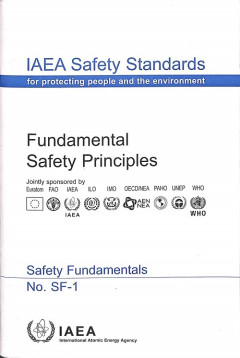
Fundamental Safety Principles, Safety Fundamentals
This publication states the fundamental safety objective and ten associated safety principles, and briefly describes their intent and purpose. The fundamental safety objective — to protect people and the environment from harmful effects of ionizing radiation — applies to all circumstances that give rise to radiation risks. The safety principles are applicable, as relevant, throughout the en…
- Edisi
- -
- ISBN/ISSN
- 9201107064 / 1020525X
- Deskripsi Fisik
- 21 p. : Illus. ; 24 cm
- Judul Seri
- Safety Standards Series No. SF-1
- No. Panggil
- -
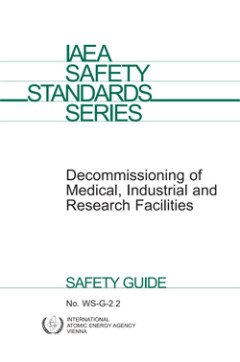
Decommissioning of Medical, Industrial and Research Facilities, Safety Guide
This Safety Guide addresses the subject of how to meet the requirements for the decommissioning of medical, industrial and research facilities where radioactive materials and sources are produced, received, used and stored. It provides guidance to national authorities and operating organizations, particularly to those in developing countries (as such facilities are predominant in these countrie…
- Edisi
- -
- ISBN/ISSN
- 9201020886 / 1020525X
- Deskripsi Fisik
- 37 p. : Illus. ; 24 cm
- Judul Seri
- Safety Standards Series No. WS-G-2.2
- No. Panggil
- 362.1 IAE d
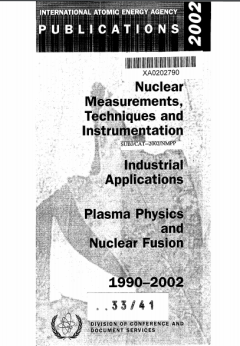
Nuclear Measurements, Techniques and Instrumentation, Industrial Applications…
The purpose of this series of annually published volumes of which the earlier issues were supplements to the Nuclear Fusion journal is to publish original contributions and review articles containing high quality data on the atomic and plasma-material interaction processes of interest to thermonuclear fusion research. The scientific scope of the series includes the topics of elementary ato…
- Edisi
- -
- ISBN/ISSN
- -
- Deskripsi Fisik
- -
- Judul Seri
- -
- No. Panggil
- -
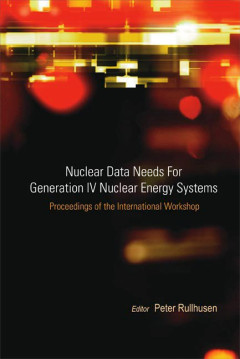
Proceeding of the International Workshop: Nuclear Data Needs For Generation I…
This volume presents recent progress in the improvement of the nuclear database needed for the development of Generation IV nuclear energy systems. The Generation IV International Forum (GIF) identified six advanced concepts for sustainable nuclear energy production at competitive prices and with advanced safety, with special attention to nuclear non-proliferation and physical protection iss…
- Edisi
- -
- ISBN/ISSN
- 9781-256-830-1
- Deskripsi Fisik
- -
- Judul Seri
- -
- No. Panggil
- CD0079
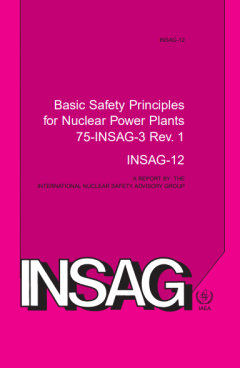
Safety Series No.75-INSAG-3. INTERNATIONAL NUCLEAR SAFETY ADVISORY GROUP. Bas…
INSAG has prepared this report in accordance with its terms of reference “to formulate, where possible, commonly shared safety concepts”. The understanding and application of these safety principles should improve safety and benefit everyone, especially those in countries that use or intend to use nuclear power as an energy source
- Edisi
- -
- ISBN/ISSN
- -
- Deskripsi Fisik
- -
- Judul Seri
- -
- No. Panggil
- -
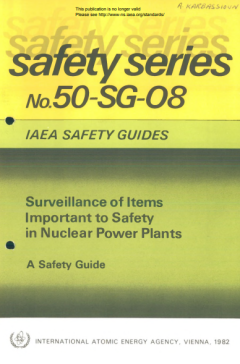
Safety Series No.50-SG-08.Surveillance of items Importment to Safety in Nucle…
This Safety Guide provides guidance and recom m endations on surveillance activities to ensure that structures, systems and com ponents im portant to safety are available to perform their functions in accordance w ith design intent and assumptions. The Guide was prepared as part of the IAEA’s programme, referred to as the NUSS Programme, for establishing Codes of Practice and Safety Guides re…
- Edisi
- -
- ISBN/ISSN
- -
- Deskripsi Fisik
- -
- Judul Seri
- -
- No. Panggil
- -
 Karya Umum
Karya Umum  Filsafat
Filsafat  Agama
Agama  Ilmu-ilmu Sosial
Ilmu-ilmu Sosial  Bahasa
Bahasa  Ilmu-ilmu Murni
Ilmu-ilmu Murni  Ilmu-ilmu Terapan
Ilmu-ilmu Terapan  Kesenian, Hiburan, dan Olahraga
Kesenian, Hiburan, dan Olahraga  Kesusastraan
Kesusastraan  Geografi dan Sejarah
Geografi dan Sejarah